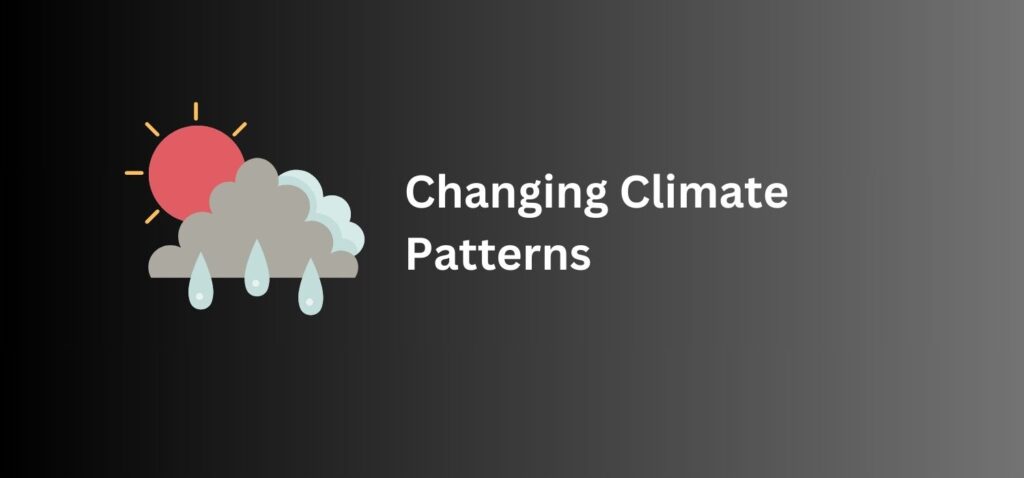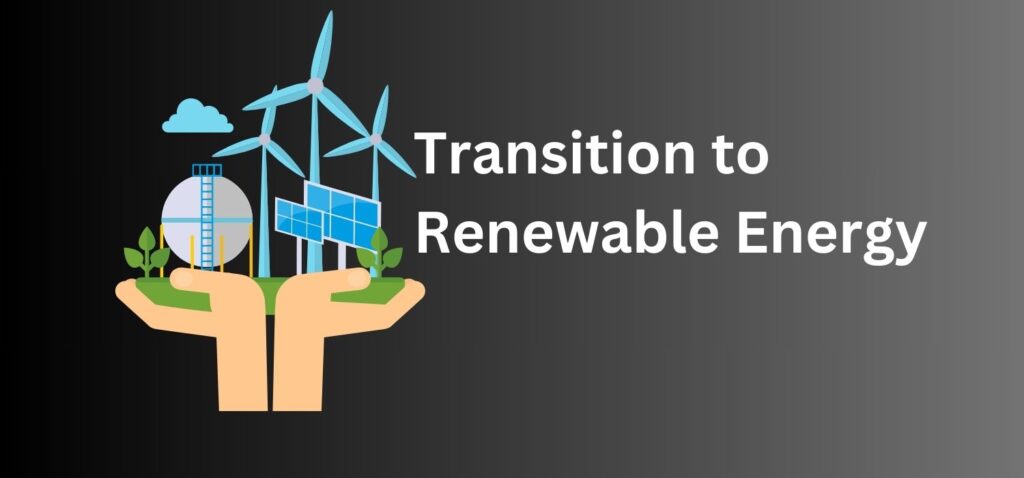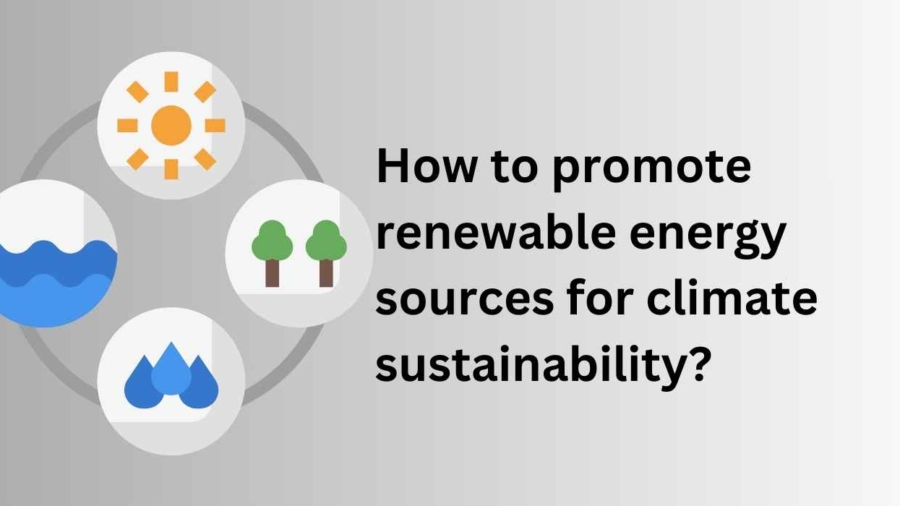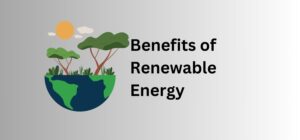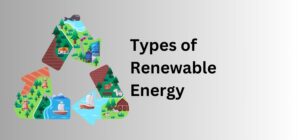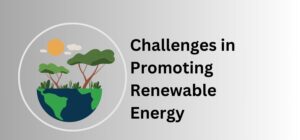Climate change, sustainability, and public health are deeply interconnected, with each influencing the others in complex and often unpredictable ways. As the climate crisis intensifies, it brings about shifts in ecosystems, weather patterns, and environmental conditions that directly affect human health. Rising temperatures, air pollution, changing disease patterns, and extreme weather events such as heatwaves, floods, and droughts are already taking a toll on public health, with the most vulnerable populations bearing the brunt of these impacts.
In parallel, the growing focus on sustainability—especially the urgent need to reduce emissions, preserve natural resources, and protect biodiversity—presents both challenges and opportunities for improving public health. Sustainable practices, such as promoting cleaner energy, reducing waste, and building more resilient cities, can have immediate and long-term health benefits. For instance, reducing air pollution through cleaner energy sources can decrease respiratory and cardiovascular diseases, while creating green spaces in urban areas can improve mental and physical health.
The growing need for integrated approaches has never been more apparent. Tackling climate change, fostering sustainability, and safeguarding human health require a collaborative effort between the climate, environmental, and public health sectors. This requires shared knowledge, combined strategies, and policy innovation to address the intersecting challenges of climate risks, environmental degradation, and the health burden these issues impose on individuals and communities.
This blog aims to explore five key areas where collaboration between the climate and health sectors can drive positive change. By bringing together experts from both fields, we can design solutions that not only protect the planet but also promote human well-being, creating a healthier and more sustainable future for all.
2. Addressing the Health Impacts of Climate Change
As climate change accelerates, its impacts on human health are becoming increasingly evident. The rise in global temperatures, changes in precipitation patterns, and more frequent extreme weather events are contributing to a range of health issues. These include respiratory and cardiovascular diseases from air pollution, heat-related illnesses, injuries from extreme weather events, and the spread of infectious diseases as ecosystems and migration patterns shift. Vulnerable groups, such as the elderly, children, and low-income communities, are disproportionately affected by these climate-related health risks.
Key Actions for Mitigating Health Risks from Climate Change
- Strengthening Health Systems
A resilient health system is essential for protecting populations from the health impacts of climate change. By building health infrastructure that can withstand extreme weather events, governments and organizations can ensure the continued delivery of healthcare services in the face of climate disruptions. This includes ensuring healthcare facilities are climate-proof, expanding disaster response capacity, and improving health sector readiness for climate-related health emergencies. - Improving Early Warning Systems
Climate-related health risks, such as heatwaves, floods, and disease outbreaks, can be mitigated through early warning systems. These systems enable timely action, such as issuing heat advisories or preparing for potential disease outbreaks, allowing individuals and communities to take preventive measures. Collaboration between climate scientists, public health experts, and local authorities is essential to ensure that warning systems are accurate, accessible, and actionable.
- Building Resilient Communities
Community-level resilience is vital for mitigating the health impacts of climate change. This includes educating communities about climate-related health risks, providing resources to protect vulnerable populations, and investing in local adaptation strategies. For instance, communities can be trained on how to stay safe during extreme weather events, such as during floods or heatwaves, while also implementing health programs that promote physical and mental well-being in the face of climate disruptions.
The Role of Collaboration
Collaboration between climate experts, health professionals, and policymakers is crucial in addressing the health impacts of climate change. By working together, these sectors can develop integrated strategies that not only address environmental challenges but also improve public health outcomes. For example, reducing air pollution through cleaner energy can alleviate respiratory diseases, while designing cities with green spaces can reduce the urban heat island effect and promote physical activity.
Incorporating health considerations into climate action plans ensures that both environmental sustainability and human health are prioritized. These integrated efforts will help create a healthier, more resilient world, capable of withstanding the health challenges posed by climate change.
3. Promoting Sustainable and Healthy Food Systems
The links between sustainability, climate change, and public health are particularly evident in food systems. Unsustainable food production practices, such as industrial agriculture, monocropping, and overuse of chemical fertilizers, not only contribute to environmental degradation but also have significant public health consequences. These systems often lead to malnutrition, obesity, and chronic diseases, which are further exacerbated by climate change, making it crucial to promote food systems that are both sustainable and health-conscious.
How Unsustainable Food Production Affects Climate and Health
Modern food production is a major driver of climate change. Agricultural practices contribute to deforestation, soil degradation, loss of biodiversity, and significant greenhouse gas emissions. At the same time, the food we produce is often unhealthy, with diets high in processed foods, sugar, and unhealthy fats. These dietary patterns are linked to rising rates of obesity, diabetes, heart disease, and other chronic health conditions. Additionally, climate change is making food systems more vulnerable, with increased risks of droughts, crop failures, and food insecurity affecting millions worldwide.
Key Actions for Creating Sustainable and Healthy Food Systems
Promoting Plant-Based Diets
One of the most effective ways to reduce the environmental impact of food systems and improve public health is by promoting plant-based diets. Shifting towards more plant-based foods can reduce greenhouse gas emissions, land use, and water consumption, while also lowering the risk of diet-related diseases such as heart disease, diabetes, and certain cancers. Governments, businesses, and health organizations can work together to encourage plant-based food choices by offering incentives for sustainable farming, improving access to healthy foods, and promoting awareness about the environmental and health benefits of plant-based eating.
Reducing Food Waste
Approximately one-third of the food produced globally is wasted, contributing to significant environmental and social issues. Reducing food waste can have a profound impact on both sustainability and health. Wasted food not only represents a waste of resources such as water, energy, and labor but also leads to unnecessary greenhouse gas emissions when food decomposes in landfills. Additionally, food waste often occurs in low-income communities where access to nutritious food is already limited. Efforts to reduce food waste, such as better food storage, improved supply chain management, and consumer education, can help alleviate both environmental and public health challenges.
Supporting Regenerative Agriculture
Regenerative agriculture is an innovative farming approach that focuses on restoring soil health, increasing biodiversity, and improving carbon sequestration. Practices such as crop rotation, agroforestry, and no-till farming reduce the environmental impact of food production while improving the nutritional quality of crops. Supporting regenerative agriculture not only helps mitigate climate change but also promotes healthier food systems by producing more nutrient-dense crops and supporting local farmers.
Ensuring Access to Healthy, Sustainable Food
A key aspect of promoting healthy food systems is ensuring that everyone has access to nutritious, sustainably produced food. Food insecurity remains a significant challenge, especially in low-income communities, where access to healthy food is limited. By supporting local food systems, strengthening food distribution networks, and promoting policies that make healthy food affordable and accessible, we can create more equitable food systems that benefit both people and the planet.
The Role of Collaboration in Building Sustainable Food Systems
Collaboration between the climate, health, and agricultural sectors is essential to creating food systems that are both sustainable and beneficial to public health. Climate scientists, nutrition experts, agricultural specialists, policymakers, and the food industry must work together to develop and implement strategies that promote sustainable food production, reduce health disparities, and mitigate climate risks. By integrating health and sustainability considerations into food policies and practices, we can build a food system that nourishes both people and the planet.
As climate change continues to disrupt food systems, transforming the way we produce, distribute, and consume food will be crucial for building a healthier, more sustainable future. A shift towards sustainable food systems can help reduce environmental damage, improve health outcomes, and ensure a more equitable and resilient food future for all.
4. Advancing Green Cities for Healthier Environments
Urban areas are at the forefront of both climate change challenges and opportunities for improving public health. As more people live in cities, the environmental and health impacts of urbanization become increasingly significant. From air pollution and heat islands to limited green spaces and poor access to clean water, cities are hotspots for climate-related health risks. However, urban areas also offer unique opportunities for addressing these challenges through sustainable, health-promoting urban design.
The Link Between Urbanization, Climate Change, and Health
Cities are responsible for a large share of global greenhouse gas emissions, with transportation, energy use, and construction all contributing to the climate crisis. At the same time, the rapid growth of urban populations often leads to increased pollution, overcrowded housing, and inadequate public services, which negatively impact health. Air pollution, which is common in many urban areas, contributes to respiratory diseases, cardiovascular conditions, and premature deaths. Urban heat islands—areas that experience higher temperatures than surrounding rural areas due to human activity and infrastructure—further exacerbate health risks, particularly during heatwaves.
However, cities also provide an opportunity to implement green, sustainable solutions that improve both the environment and the health of their residents. By investing in green urban infrastructure, cities can reduce environmental impacts, mitigate climate risks, and create healthier spaces for people to live, work, and play.
Key Actions for Advancing Green Cities
Developing Green Spaces and Urban Parks
Green spaces such as parks, community gardens, and green roofs provide a wide range of health benefits, including reducing stress, improving mental health, and promoting physical activity. Additionally, these spaces help mitigate climate change by improving air quality, reducing the urban heat island effect, and promoting biodiversity. Urban planners, policymakers, and community organizations must prioritize the creation and maintenance of green spaces to improve both environmental sustainability and public health outcomes.
Eco-Friendly and Sustainable Urban Infrastructure
Cities can reduce their environmental footprint by investing in eco-friendly infrastructure. This includes designing energy-efficient buildings, installing renewable energy sources such as solar panels and wind turbines, and using sustainable construction materials. Implementing green building standards, such as LEED certification, can ensure that new buildings and retrofitted structures are energy-efficient and climate-resilient. In addition, building cities that are more walkable and bike-friendly can reduce reliance on fossil fuel-powered transportation, lower greenhouse gas emissions, and improve the health of urban residents.
Creating Sustainable Transportation Systems
Transportation is one of the largest sources of emissions in urban areas, contributing to both climate change and air pollution. To address these issues, cities must transition to sustainable transportation solutions. This includes expanding public transportation networks, promoting electric vehicles (EVs), developing pedestrian-friendly infrastructure, and creating bike lanes. Sustainable transportation systems can reduce congestion, improve air quality, and provide accessible, affordable options for all residents.
Implementing Climate-Resilient Urban Planning
Climate resilience is crucial for ensuring that cities can withstand the impacts of climate change, such as extreme weather events, flooding, and rising temperatures. Cities must incorporate climate resilience into urban planning by creating flood management systems, designing buildings to withstand heatwaves and storms, and investing in water conservation strategies. Ensuring that cities are built to adapt to climate change can prevent health risks related to extreme weather and improve overall quality of life.
The Role of Collaboration in Advancing Green Cities
Collaboration between urban planners, health professionals, environmentalists, and policymakers is key to advancing green cities. By working together, these sectors can develop integrated strategies that address both climate and health challenges, ensuring that cities are not only sustainable but also healthy places to live. For example, health experts can help inform urban designs that prioritize active transportation and access to green spaces, while environmental scientists can contribute knowledge on climate resilience and sustainable infrastructure.
The shift towards green cities is not just about mitigating climate risks but also about improving the quality of life for urban populations. By incorporating green, sustainable, and health-promoting elements into urban planning, cities can reduce environmental impacts, improve public health outcomes, and create resilient communities that thrive in a changing climate. The time to invest in green cities is now, as they represent a vital opportunity to create healthier, more sustainable urban environments for generations to come.
5. Strengthening Climate Adaptation and Health Resilience
As climate change continues to progress, it is essential to not only mitigate its impacts but also adapt to the new realities it presents. Climate adaptation refers to the process of adjusting to actual or expected climate effects, while health resilience is the capacity of individuals, communities, and systems to respond to and recover from health impacts caused by climate-related events. Strengthening both climate adaptation and health resilience is critical for ensuring that vulnerable populations can cope with the changing climate and its associated health risks.
The Importance of Climate Adaptation for Health
The health impacts of climate change are wide-ranging, affecting everything from water quality and food security to mental health and disease transmission. Extreme weather events, such as hurricanes, floods, and droughts, are becoming more frequent and severe, putting immense strain on healthcare systems. Additionally, the spread of vector-borne diseases, such as malaria and dengue, is being influenced by changing temperatures and precipitation patterns. As these health risks intensify, strengthening the ability of communities and health systems to adapt is crucial to minimize the adverse effects of climate change.
Key Strategies for Strengthening Climate Adaptation and Health Resilience
Building Climate-Resilient Health Systems
Health systems must be able to withstand and respond to the increased health demands posed by climate change. This includes investing in infrastructure that can endure extreme weather, training healthcare workers to respond to climate-related health crises, and ensuring that medical supplies and services are accessible during climate disasters. Strengthening health systems also involves improving the surveillance and monitoring of climate-related health risks, enabling early detection and response to emerging health threats.
Focusing on Vulnerable Populations
Vulnerable populations, including low-income communities, children, the elderly, and people with pre-existing health conditions, are disproportionately affected by climate change. These groups are more likely to suffer from climate-related diseases, malnutrition, and mental health impacts. Climate adaptation strategies must prioritize these populations by improving access to healthcare, implementing social safety nets, and ensuring that adaptation measures are equitable and inclusive. Special attention should be given to ensuring that vulnerable communities have the resources and information needed to protect themselves from climate risks.
Integrating Climate Change into Health Policies
Climate change must be incorporated into health policies at all levels of government. By aligning health and climate policies, governments can ensure that adaptation efforts address both environmental and health outcomes. This may include integrating climate resilience into national health plans, setting up climate-health task forces, and providing funding for climate adaptation projects that directly improve public health. Collaborative policymaking between climate experts, public health authorities, and other stakeholders is essential to creating coherent strategies for adapting to climate change.
Promoting Public Awareness and Education
Public awareness is a powerful tool for building health resilience to climate change. Educating communities about the health risks associated with climate change—such as heatwaves, waterborne diseases, and food insecurity—can empower individuals to take preventative measures. Public health campaigns should focus on providing practical advice for staying healthy during extreme weather events, as well as promoting lifestyle changes that can reduce vulnerability to climate-related health issues, such as staying hydrated during heatwaves and using mosquito nets to prevent the spread of vector-borne diseases.
Implementing Nature-Based Solutions
Nature-based solutions, such as reforestation, wetland restoration, and urban green spaces, offer an effective way to enhance climate resilience while improving public health. These solutions provide multiple co-benefits, such as reducing urban heat islands, improving air quality, and preventing flooding. For instance, planting trees in cities can help cool the environment, improve air quality, and offer spaces for physical activity, all of which contribute to better health outcomes. Additionally, nature-based solutions can help sequester carbon, contributing to climate change mitigation efforts.
The Role of Collaboration in Building Health Resilience
Strengthening climate adaptation and health resilience requires a multi-sectoral approach. Collaboration between climate scientists, health professionals, urban planners, community leaders, and policymakers is essential for developing comprehensive strategies that address both environmental and health needs. By sharing knowledge and working together, these sectors can create innovative solutions that ensure communities are prepared for climate-related health risks and can recover more quickly from climate impacts.
Building climate-resilient health systems is not just about responding to immediate climate threats but also about creating long-term systems that support health and well-being in the face of climate change. By integrating climate adaptation into health planning and focusing on the most vulnerable, we can create more resilient communities that are better equipped to handle the evolving challenges of a changing climate. This integrated approach will not only protect human health but also ensure that we are prepared for the future impacts of climate change.
Conclusion:
The interconnectedness between climate change, sustainability, and public health is undeniable. As the impacts of climate change become more pronounced, it is essential for the climate and health sectors to collaborate closely in order to protect both the environment and human well-being. From addressing the health impacts of climate change and promoting sustainable food systems to advancing green cities and strengthening climate adaptation, each area of collaboration presents an opportunity to create a more sustainable, healthy future.
The integration of climate and health strategies is not only vital for mitigating current risks but also for ensuring resilience in the face of future challenges. By working together, these sectors can create solutions that benefit both the planet and the people who inhabit it. Through collaboration, innovation, and a shared commitment to sustainability, we can drive positive change that improves environmental quality, reduces health risks, and enhances overall well-being for generations to come.
As we continue to face the growing challenges of climate change, the importance of cross-sectoral cooperation will only increase. By prioritizing climate-health collaborations, we have the opportunity to build a healthier, more sustainable world for all.



